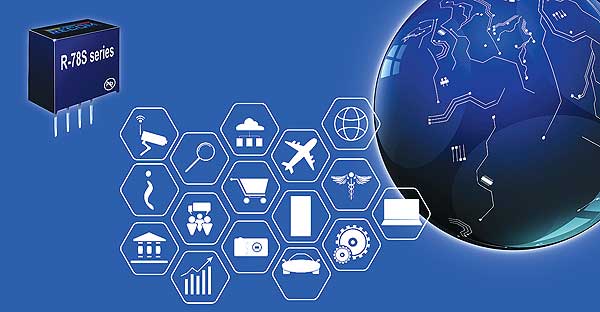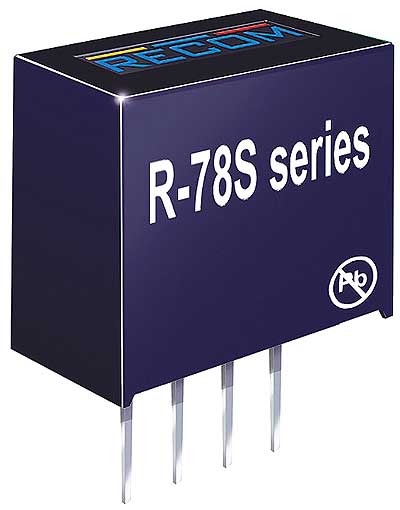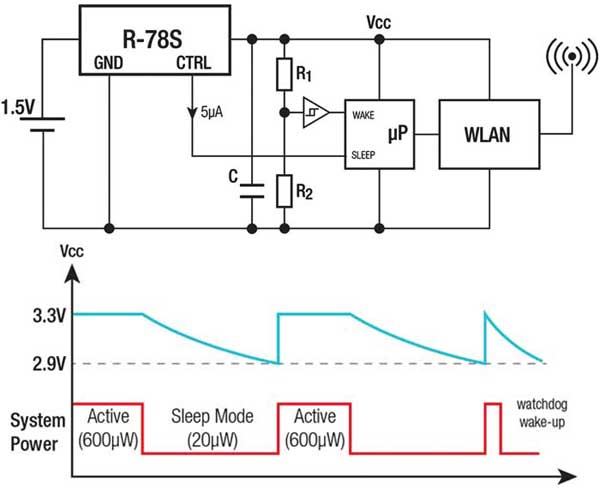 Without sensors, there would be no Internet of Things (IoT). They measure and record temperature, brightness, movement and many other parameters and transfer the data to the smart control devices. Sensors however need power. Although their power consumption is generally very low, they cannot work without it. Making sure that battery-operated sensors keep running for many years without any maintenance is quite a difficult task.
Without sensors, there would be no Internet of Things (IoT). They measure and record temperature, brightness, movement and many other parameters and transfer the data to the smart control devices. Sensors however need power. Although their power consumption is generally very low, they cannot work without it. Making sure that battery-operated sensors keep running for many years without any maintenance is quite a difficult task.
This article describes how the service life of batteries can be significantly extended.
With the arrival of Industry 4.0, cyber-physical systems, the Internet of Things and cloud computing have found their way into modern factories. Operating as integrated communication networks, cyber-physical systems take decisions and act, while communicating in real-time with other systems as well as with humans. One of the main reasons for the rapid technological progress over the last few years is the drop in price of sensors of all types. Only ten years ago, sensor technology was the preserve of highly specialised applications. Today, sensors are a mass product. This development has made it possible to integrate more and more devices into networks where they combine, process and exchange ever larger volumes of data. However, every single sensor in such a network must be supplied with power – be it through a central power supply, battery or energy harvesting devices.

Figure 1: The R-78S boost switching regulator prolongs not only the service life of batteries in IoT applications but squeezes the last bit of power out of the cells.
The myth of the 3V coin battery
Many IoT and Industry 4.0 applications run with 3V coin batteries, which are not only cheap but also very reliable. Such batteries need however to be changed quite frequently. A fully charged CR2032 coin battery supplies approximately 3.2V. After only a few operating hours, the voltage drops however to below 3V, which might not be sufficient for certain wireless modules (WLAN, Bluetooth, LoRaWAN, etc.). As a result, transmission can become unreliable or the signalling range might suddenly be limited.

Figure 2: TBy integrating a buffer capacitor into the circuit, the R-78S can be set to sleep mode, saving valuable battery power.
Extending the service life of batteries by using switching regulators
The R-78S boost switching regulator from RECOM (figure 1) has been specially developed for battery-powered IoT devices.
The plug&play module provides a stable output of 3.3V from input voltages of as little as 0.65VDC to 3.15VDC, squeezing the last bit of energy from the battery cell. The R-78S thus enables users to run microprocessors, WLAN/Bluetooth modules and IoT systems with a single 1.5V battery or cell, which has a much longer service life than a conventional coin battery.
Figure 2 shows a typical application of the R-78S in a wireless module. The circuit is only activated for brief periods to send data. During these short times, the entire circuit consumes around 600µW. When not sending data, the circuit is in sleep mode. During these times, the R-78S is powered by a buffer capacitor and consumes only 7µA. If the capacitor charge drops below a certain limit, the circuit is briefly activated for recharging. This technology guarantees reliable, maintenance-free operation for periods of 10 years and more. As converters are affordable, the extra investment pays for itself in no time thanks to much lower battery and maintenance costs.

Figure 3: In combination with an energy harvesting device the R-78S boost switching regulator provides a stable voltage to a sensor application.
Condition based maintenance
Condition-based maintenance is a system, which aims to provide information about a machines’ condition to conduct maintenance only if actually needed and falls in the category of predictive maintenance. To achieve this, typically many sensors are needed to communicate different types of signals. In future systems, intelligent sensors will supervise the machines and notify incoming interferences automatically to each other. They make use of predictive analytic models to trigger a corrective action. Turning away from wires and batteries, these sensors could be supplied by micro generators (MEMS), which harvest energy of up to 4mA through environmental conditions, such as vibrations, heat, light, or temperature differences. This concept is called Energy Scavenging or Energy Harvesting.
An R-78S from RECOM is ideal to support the MEMS in providing a stable output voltage to the sensor application.
Conclusion
As the Internet of Things is really an internet of sensors, it depends on innovative power supply solutions. RECOM offers intelligent components that help safe battery power with the R-78S boost switching regulator. These regulators squeeze the last bit of energy out of the battery, so that applications can be run for more than a decade without problems and no need for servicing.
Aurocon Compec | www.compec.ro
Recom Switching Regulator, 0.65 → 3.15V dc Input, 3.3V dc Output, 100mA
RS Stock No: 139-2824
Brand: Recom
Mfr. Part. No.: R-78S3.3-0.1
The R-78S is a DC-DC boost converter designed to run from single cell batteries. The input voltage range of 0.65V-3.15V means that alkaline, NiCd, NiMH, zinc-carbon or lithium chemistry cells can be used to generate a stable 3.3 V output to power microprocessors, WLAN/Bluetooth modules and IoT systems. The high efficiency and low standby consumption can be used to extend battery lifetimes until the “last gasp” to get the maximum available energy out of the cell. The wide operating temperature of -40°C to +100°C, short circuit protection, OTP, Class A EMC and 3-year warranty round off this high performance converter.
• SIP4
• Single Output
• 0.1 A
• Boost Converter
• Efficiency 93%
• Continuous short circuit protection
• Input range down to 0.65 V
• 3-year warranty


